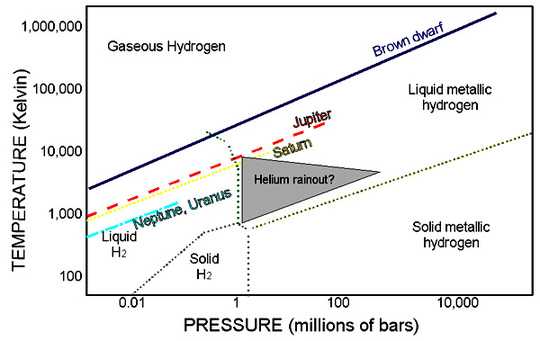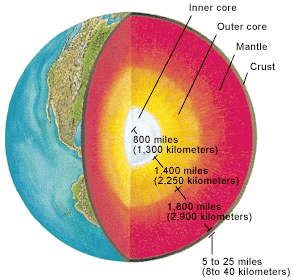Edit:
Yes such a planet could exist (even made of water):
Basically we're looking for how much mass will put 100kBar or less on the center of the planet at the distance from the star which provides 650K of heat to the planet?
Mercury seems a good fit for the heat, let's run with it:

Given that phase diagram, you could have a planet that doesn't experience more than 100kBar of pressure at the center of its mass, that orbits at the distance of Mercury. Mercury has an internal pressure of 400,000 atmospheres, but is 5.4x as dense as water. Reduce the internal pressure of our waterworld by 1/5th because our hypothetical planet is 1/5th as dense. We only need to stay below ~98,000 atm (we're at 74,074 atm) to be under 100kBar. Which means we could have a liquid planet bigger than the size of Mercury, at slightly greater than Mercury's distance from the sun or less. Assuming even heating throughout the planet.
According to this link, however, that's not a problem, we've placed our planet at (or nearer) the 650K heat-distance from the sun.
The top of the ocean is boiling but the atmosphere at the surface is also at 100% humidity. Any rain (due to troposphere cooling) will boil before it hits, but you'll probably have cloud cover somewhere inbetween. Rain might potentially be able to fall on the night side, or if cloud cover provides enough shade/heat blocking. However cloud cover doesn't make Venus cold. Cloud cover also blocks heat-loss to space, which means the night side of the planet will be warmer than Mercury's night side.
No magnetosphere means we'd constantly be losing this water vapor atmosphere (well, and pure oxygen, since the hydrogen is stripped via photodisassociation). I'm not sure how long the planet would last after it's creation and heating.
So many thoughts on this concept/question, and I don't want to clutter up the comments even more.
Some thoughts:
You'd need exceptionally pure liquids/gases to form a non-solid planet. Anything that could precipitate out would cause a solid core. That's a probably a lot less than one ppm (or even 1 ppt). I'm unsure of how precisely pure we'd need to make the above liquid-water planet. I'm pretty sure it's beyond our current capabilities. OTOH, maybe you let the core form, and then lift it out using massive engines.
You also (most likely) need an exceptionally clean solar-system, as one of the definitions of a planet is something which cleans up its orbital path. You can't have asteroids (and probably not even space dust, for age values over a billion years), or anything else which can get sucked into your planet, or they will form a solid core. Of course, our aliens could keep pulling out cores, tossing them at the current moon, and letting that moon reform into a oblate spheroid.
edit:
In case it wasn't clear by other comments, and other parts of this answer - the planet would have to be small. I'm unsure of how small, but it could not be a gas-giant, as that's big enough for its gravity to solidify gases (and most likely its liquids).
You may end up with a gas-planet with a liquid core - especially if your planet picks up comets, or has spare free hydrogen/oxygen that can get hit by lightning, or anything else. I'm assuming the whole point of this exercise is that you want to pass through your planet - hitting the liquid surface (that exists at vast pressure) at sufficient speed (falling speed alone, much less powered flight) might be a problem.
I'd be curious to know if a small enough gas-planet (not a giant, obviously) would have enough heavier gases to still maintain self-gravity, while losing the lighter ones, so as to avoid the solid-gas core. Or would a small enough planet even form out of gases? IIRC, they can't form at the interior of solar systems (get blown away), but form at the outer edge, and get thrown inwards and melted...





That answer only answers half of the question. It doesn't address gas-giants. I'd be curious to know if a small enough gas-giant would have enough heavier gases to still maintain self-gravity, while losing the lighter ones, so as to avoid the solid-gas core. – user3082 – 2015-02-09T17:25:31.027
1@user3082 I've modified the question to avoid the dupe, should be good to go now hopefully. – Tim B – 2015-02-09T18:00:42.017
The other question doesn't describe a planet with a liquid core. It describes a planet with a water core which is compressed into an exotic form of ice by the high pressure. – ckersch – 2015-02-09T18:17:01.300
@ckersch The other question doesn't specify that, although the answers might. – Tim B – 2015-02-09T18:20:25.300
You need to modify the question, a gas-giant will always have enough mass to solidify something, it's going to be the edge cases, of really small pockets of gas, or giants that get chunks blown out of them (but they'd have to be near enough something else that draws off that gaseous mass). Might lose some to very high solar wind and magnetosphere/photodisassociation? – user3082 – 2015-02-09T18:39:49.670
@ckersch is attempting to say, "would other (naturally occurring) liquids create a liquid core", since the other question's answers (iirc) don't talk about other things (because that would get them dinged for not answering the question), than water (which has exotic forms of ice). – user3082 – 2015-02-09T18:42:50.183
Also: we don't know for certain that Jupiter even has a solid core, so it's possible that Jupiter is an answer to your last question. – Nathaniel – 2020-01-08T18:15:49.543